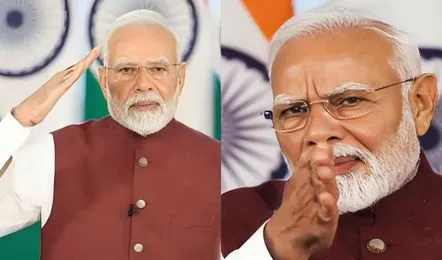Prime Minister’s latest speech following the sudden cease fire after four days of Indo-Pak ‘war’ was not just a ‘thank you’ statement to the Indian army and to the people in general; it was also a strong statement on India’s future military strategy. He made it clear that ‘terror and talk’, ‘terror and trade’ and even ‘blood and water’ cannot go together.
India’s coordinated military action – army navy airforce – revealed the alertness of the Indian defence force and the detailed planning before it struck deep into the Pakistan territory. India’s first action was to remove the terror training camps and Indian force was eminently successful in wiping them out in nine different locations. India said it was a well ‘calibrated’ move, closely following the UN guidelines, to tackle terrorism. So far India was not willing to describe this move as ‘war’; but what we understand from Modi’s latest statement is that, henceforth, India will treat all terrorist activity as war.
Pakistan, on the other hand, planned on May 9 midnight to attack 26 Indian military installations and civilian establishments simultaneously. This was Pakistan’s answer to India’s terror cleansing. But India was prepared: India’s indigenously built ‘Akash’ weapon system intercepted aerially all the Pakistani missiles. Pakistani drones and airplanes came in waves but their destructive intentions were neutralized in mid air itself by these multi targeted defense mechanism built by DRDO. This project was planned by former President Abdul Kalam under the leadership of Pralad Ramarao, who after this success has become an overnight hero. If all these ‘waves’ of Pakistani missiles had touched ground, there could be widespread destruction and civilian killings. In retaliation to the Pakistani attack, India targeted the defense installations in Lahore, Rawalpindi, Karachi and Islamabad. This rattled the Pakistani army. Though the Indian army did not own up, there are indications that the Indian attack damaged Pakistani nuclear plant in the Kirana Hills and an Egyptian plane was seen rushing anti-radiation material to the location.
Narendra Modi also warned that India will not tolerate nuclear threats which Pakistan often resort to. True, India is under an agreement not to use nuclear weapons first; and for Pakistan, since this rule does not apply, it is an advantage to initiate the attack. But Modi seemed determined not to be blackmailed by nuclear threats. President Trump was happy that he could broker a ceasefire between these two warring nations quickly so that nuclear fallout could be avoided. But India seems uncomfortable with this ‘third party’ negotiation. Officially, the Pakistani government wanted to talk and India agreed. The initiative to talk however came from Pakistan. But Pakistani army same night violated the ceasefire and Doval, the Indian security advisor, had to call up China to stop the violations. There are speculation about differences between the Pakistani army and the government on the question of ceasefire. Donald Trump’s claim that the US alone had negotiated towards a ceasefire to stop a possibly nuclear war was partially true, because China also intervened at the last moment to stop Pakistani violations of ceasefire.
Operation ‘Sindoor’ has not ended. If we go by what Modi has suggested in his speech, it is just the beginning of a new aggressive military strategy of India. This four day war was just a testing ground to reveal to the world that India is now fully armed to fight its own battle. Just as Pralad Ramarao said, it took 15 years to make India’s defense equipment perform so satisfactorily. World also saw that the drones supplied by Turkey and the attack missiles supplied by China to Pakistan were no match to India’s new defense mechanism built on its own.
